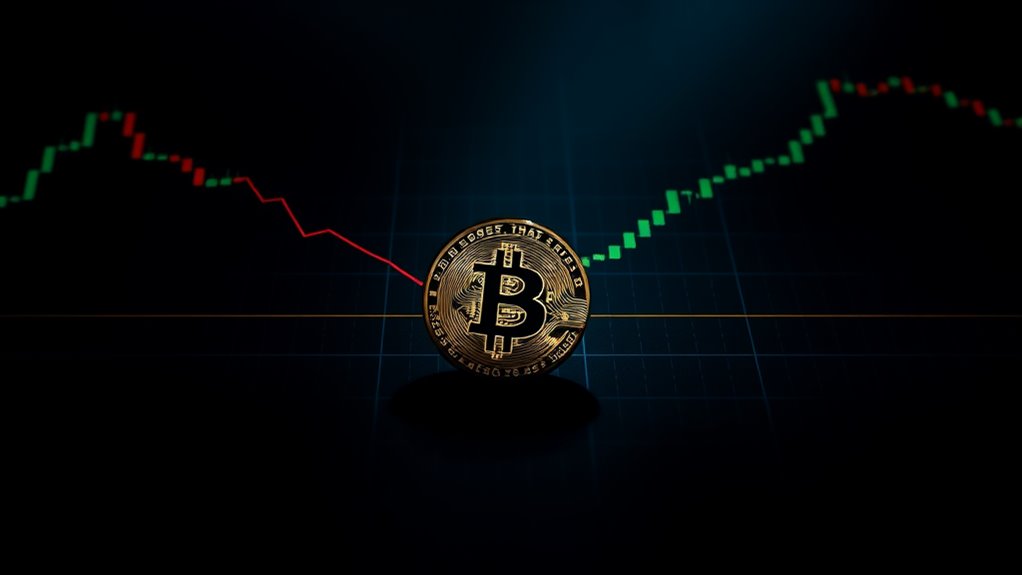Bitcoin’s ‘Death Cross’: Why This Feared Technical Pattern Might Actually Signal a Buy
Note: This post may contain affiliate links, and we may earn a commission (with No additional cost for you) if you make a purchase via our link. See our disclosure for more info. The crypto world is constantly changing. This content is for informational purposes only and not financial, legal, or professional advice So, please verify the info on the cryptocurrency provider’s websites.
 bitcoin buy signal potential">
bitcoin buy signal potential">While crypto enthusiasts celebrate new all-time highs, a looming technical pattern threatens to rain on their parade: the infamous “Death Cross.” This ominous-sounding indicator occurs when Bitcoin‘s 50-day moving average drops below its 200-day moving average, signaling a potentially major shift from bullish to bearish momentum.
The technical mechanics are straightforward. The 50-day MA captures short-term sentiment, while the 200-day MA reflects long-term trends. When the short crosses under the long? Bad news, supposedly. Historically, this pattern preceded Bitcoin's brutal crashes in 2013 (down 70%), 2017 (chopped in half), and the COVID panic of 2020 (another 50% haircut).
The Death Cross speaks: when Bitcoin's short-term pulse dips below its long-term heartbeat, wallets have historically bled.
But here's the kicker: the Death Cross is notoriously unreliable. Remember 2019? Cross at $8,000, followed by a surge to $13,000. Or 2022's cross at $27,000 that couldn't stop Bitcoin from rocketing to $77,000. Not exactly doom and gloom.
The pattern's biggest flaw? It's embarrassingly late to the party. As a lagging indicator, the Death Cross typically appears after prices have already tanked. By the time the lines cross, smart money might already be buying the dip.
Context matters enormously. During broader bull markets, these crosses often fail spectacularly. Global liquidity surges from central banks can steamroll right over technical patterns. Historical data suggests 2025 bull market followed by bearish conditions in 2026, potentially offsetting current negative signals. Sometimes Bitcoin actually reverses upward shortly after a cross, as happened before reaching $100,000 in 2021.
The psychological impact can't be ignored, though. Fear spreads. Media outlets run scary headlines. Algorithmic traders hit sell buttons. It's a self-fulfilling prophecy—at least for a while.
Ironically, the “Golden Cross” (the opposite pattern) has proven more reliable for bullish reversals. Go figure.
The Death Cross isn't useless—it's just misunderstood. It works best as one piece of a larger puzzle, not as a standalone doom signal. When it appears in a confirmed downtrend? Pay attention. During a bull run? Maybe keep those funeral arrangements on hold. Experienced traders know to combine death cross signals with multiple technical indicators for more accurate predictions rather than relying on any single pattern.










